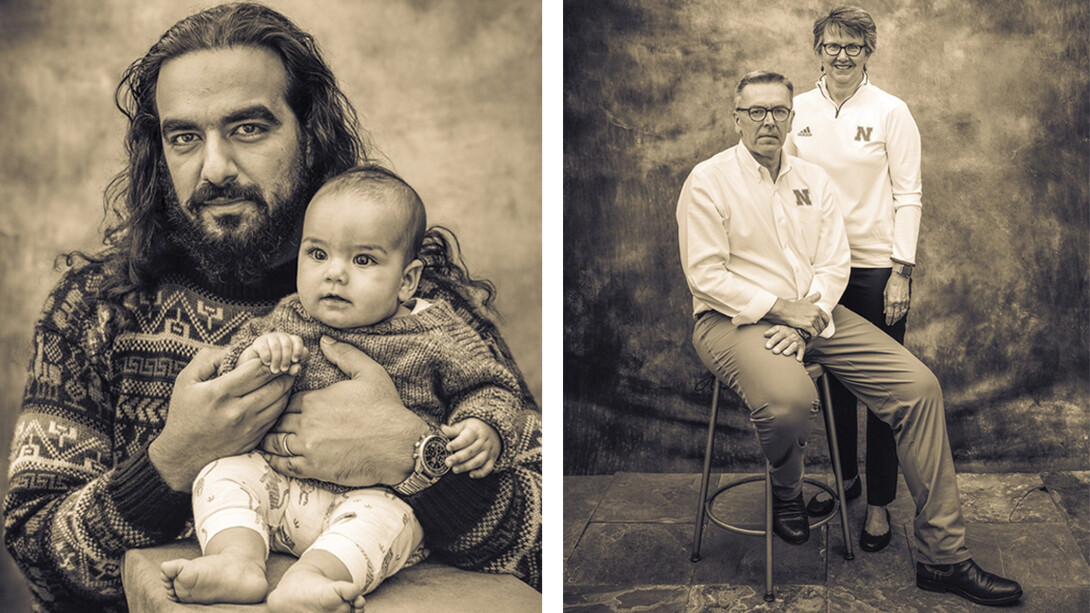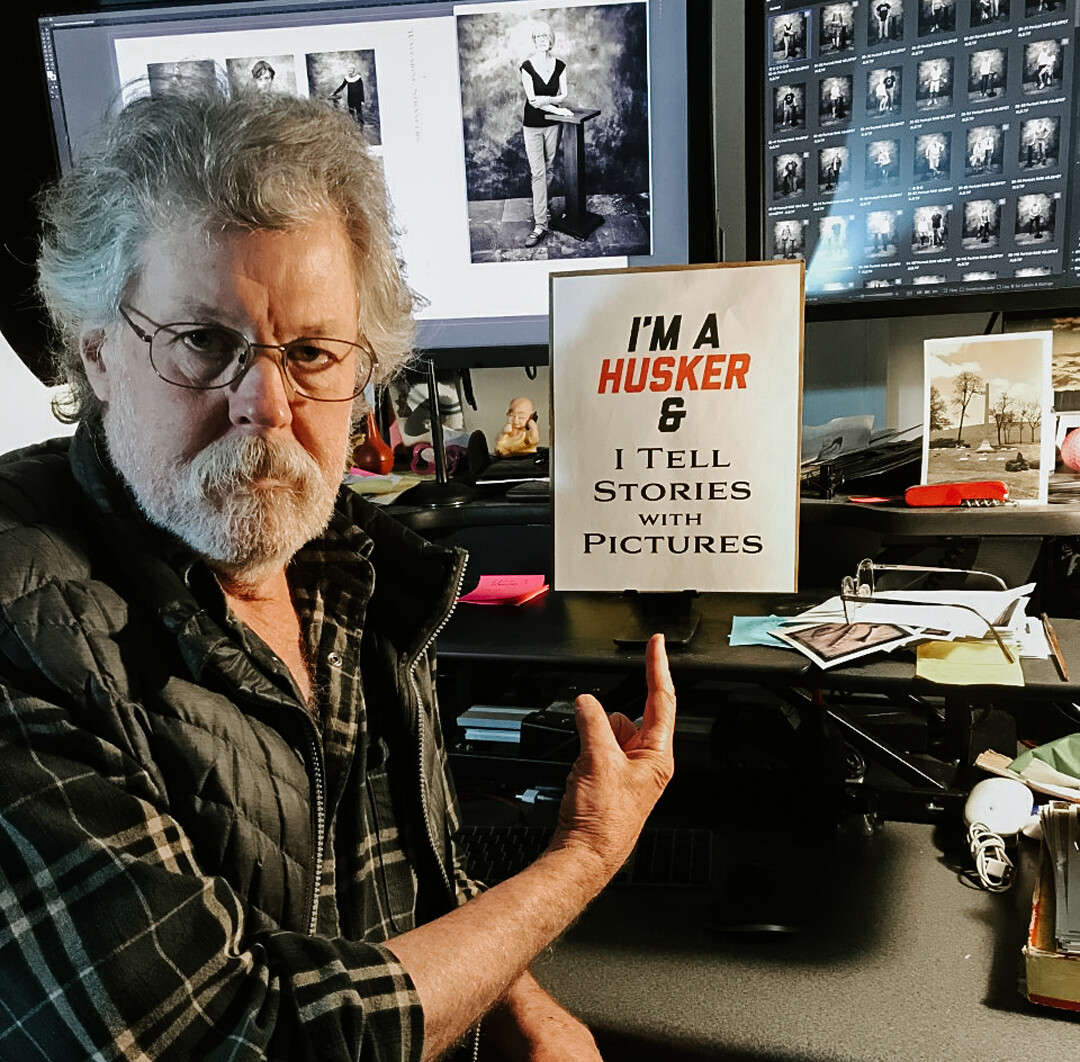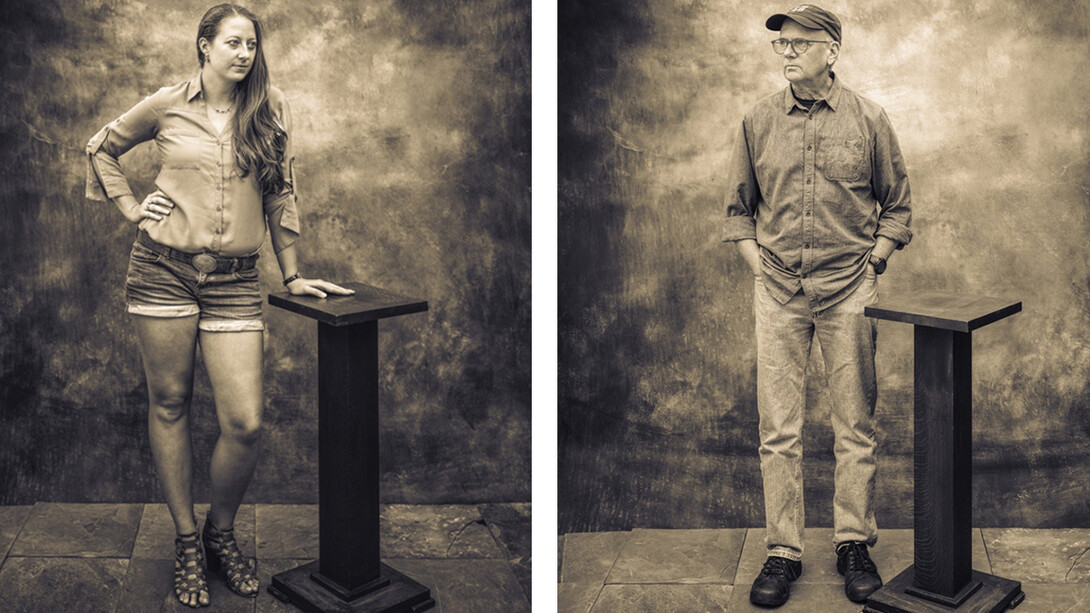
As people retreated home to practice social distancing early last spring, their newfound free time led to a bevy of creative projects and pursuits. Some tried baking bread for the first time. Others picked up a new craft like crocheting or knitting. And a few, like Michael Farrell, created something that would immortalize the unique moment in time.
Using a glass plate camera, Farrell collected the portraits and perspectives of friends old and new. All the photos were taken in Farrell’s backyard, where he created an outdoor photo studio that would allow the photos to be taken safely with social distancing.
After posting on Facebook inviting his friends and followers to partake in the series, he was shocked to see portrait requests flow in from more than 90 different individuals. Some were complete strangers and others were longtime friends and colleagues — including a handful Farrell met through his 49 years working at the university.

His work, now known as the Pandemic Portrait Project, is being turned into a book that will be shared with each of Farrell’s portrait subjects. Each portrait is paired with a written perspective from the subject about COVID-19 — with some quotes as lighthearted as noting how long it had been since the author’s last haircut, to deeper revelations over the sadness of being unable to see at-risk family members.
“You’re listening to this stuff like this and you’re thinking, ‘This is this is pretty rough stuff,’” Farrell said. “People’s motivations to be a part of this were all very individual and unique — and that’s kind of what makes it interesting.”
The glass plate camera Farrell used for the portraits was for more than just a creative effect. At the beginning of pandemic-imposed quarantines that started in spring 2020, Farrell began an extensive project collecting and organizing familial photos that had been handed down throughout the years. As he combed through portraits of ancestors long since passed, he thought about the importance and weight of the photos in his hands. For many of these people photos were a rarity that only happened during the most pivotal moments of their lives, like weddings.
He wanted to bring back the bygone use of glass plate portraits, even though they are costly and clunky compared to modern digital photography, to this pivotal COVID-19 time. Through the older form of portraiture, he aims to harken back to the days when photos held weight and deeper meaning, fully capturing the gravity of the last year.
The project grew to be something much bigger than Farrell expected, but it allowed him to find a motivation to create when most of the world was shut down. It allowed for friends to catch up in a safe manner and for Farrell to meet new acquaintances. Most importantly, it allowed him to create something that perfectly incapsulates the myriad of emotions felt while in isolation.
“And so, here we are doing this isolation… and you think, ‘Wow, what can we do, what could I do that’s of an artistic nature that commemorates this point in time,” Farrell said. “And maybe does somebody a service.”
Farrell, who previously served with NET, is a coordinator in the University of Nebraska–Lincoln’s School of Natural Resources. He’s also a co-founder of the Platte Basin Timelapse Project, which tells stories of the Platte River Basin using multimedia content.








